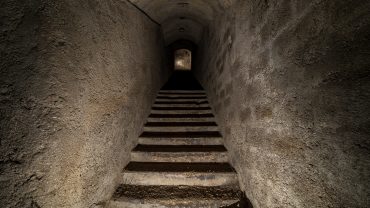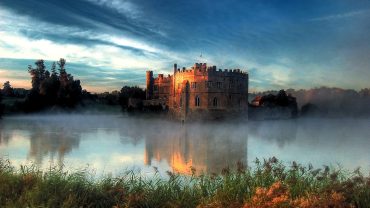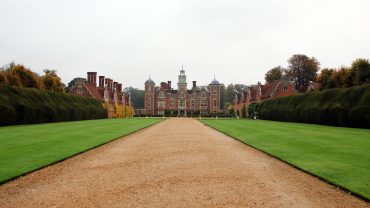The most famous landmarks in Great Britain are living symbols of the nations’ cultural heritage. From the mysterious builders of Stonehenge and Avebury to the mighty legions of ancient Rome, the Anglo-Saxons, Normans, Tudors and Georgians, every footstep tells a story and each chapter has left its mark on the UK’s architectural tapestry.
You can walk down winding cobblestone streets and catch sight of the earliest fortresses, or stand in the shadow of medieval palaces once home to kings and queens. Even in modern times, contemporary skyscrapers and innovative public spaces are redefining the skyline, yet blending seamlessly into a landscape rich with historical significance. These are some of the most famous landmarks in the UK that not only define the country’s past but also shape its identity in the present.
The most famous landmarks in Britain have become synonymous with their cities. London’s Tower Bridge, Big Ben, and Buckingham Palace are instantly recognisable symbols of the capital. Similarly, Edinburgh Castle dominates Scotland’s skyline, while Cardiff Castle anchors Wales’ history. Yet beyond these famous sites lies a wealth of lesser-known treasures and hidden gems that offer equally impressive experiences for those willing to explore a little way off the beaten path.
For some truly famous landmarks, UK architecture never fails to impress. Every corner of the country has a story to tell, and each location, whether the UK’s famous landmarks or those more obscure, contributes to the overall picture of Great Britain’s remarkable cultural legacy.
What Makes The List Of The UK’s Famous Landmarks?

City Hall in the foreground with the Shard behind (Credit: Puthipong Worasaran via Getty Images)
The diversity of Britain’s landmarks means that opinions about the ‘most famous’ vary widely. Ask a thousand people for their top ten UK landmarks, and you’ll likely receive a thousand different lists. Some might highlight natural wonders such as the White Cliffs of Dover or Loch Ness. Others may prefer historical sites such as The Tower of London or Warwick Castle. Some favour modern over medieval, like the stunning V&A Dundee, or the brilliantly-named buildings in London such as the Shard, the Gherkin, the Cheesegrater and the Walkie-Talkie. This variety reflects not only personal preference but also the multifaceted nature of British heritage – encompassing everything from prehistoric monuments to cutting-edge architecture.
Therefore, subjective though it may be, here’s our list of some of the most famous landmarks in Great Britain.
Stonehenge, Wiltshire

Stonehenge in Wiltshire (Credit: Peter Adams via Getty Images)
Rising majestically over Salisbury Plain in Wiltshire, Stonehenge is not only one of the UK’s most famous landmarks, but is recognised the world over. Construction began around 3000 BC and carried on for around 1,500 years into the awe-inspiring stone circle we recognise today. The massive sarsen stones – some weighing close to twenty-five tonnes – showcase remarkable engineering and transportation skills and cooperation among the ancient Neolithic and Bronze Age people, yet despite its iconic status, the purpose of Stonehenge remains shrouded in mystery.
Theories range from its use as an astronomical observatory to a site for spiritual ceremonies or healing. Designated a UNESCO World Heritage Site in 1986, Stonehenge welcomes well over a million visitors a year and on June 21, thousands of people gather there to celebrate the summer solstice.
Roman Baths, Somerset

Roman Baths with Bath Abbey in the background (Credit: JustinBlackStock via Getty Images)
The Roman Baths in Bath, one of the UK’s most remarkable historical sites, offer a glimpse into the sophisticated engineering and cultural practices of Roman Britain. Built around 70 AD over the natural hot springs of Aquae Sulis, the complex included an elaborate temple dedicated to Sulis Minerva, a goddess believed to embody the healing powers of the spring.
The Great Bath, a lead-lined pool fed by the thermal waters, was surrounded by arcades and marble pavements, creating a luxurious space for bathing and socialising. Despite centuries of decline after Roman rule ended in the fifth century, the site was rediscovered and restored in the Georgian era. Today, one of the most famous landmarks in Britain welcomes over a million people each year from all over the world.
Glenfinnan Viaduct, Scottish Highlands

Glenfinnan Viaduct, Scottish Highlands (Credit: Antoine van de Laar / 500px via Getty Images)
The Glenfinnan Viaduct, an iconic landmark in the Scottish Highlands, is celebrated as a masterpiece of Victorian engineering and a symbol of Scotland’s natural and cultural beauty. Completed in 1901 as part of the West Highland Railway extension from Fort William to Mallaig, the viaduct was built using mass concrete – a groundbreaking innovation at the time.
Its twenty-one elegant arches curve gracefully over the Glenfinnan Valley, rising thirty metres above the River Finnan. At 380 metres, it is Scotland’s longest concrete railway bridge.
Beyond its architectural significance, the viaduct has become one of the UK’s famous landmarks thanks to its appearance in the Harry Potter film series, where it serves as the route for the Hogwarts Express. Nestled near Loch Shiel and the Glenfinnan Monument, this remarkable structure draws visitors from around the world and is such an integral part of the heritage of Scotland, it has even appeared on the Scottish £10 note.
Brighton Palace Pier, Brighton

Brighton Palace Pier (Credit: Jon Anderson via Getty Images)
Brighton Palace Pier, a vibrant and iconic landmark, has been a highlight of British seaside culture since it opened in May 1899. Designed by R. St. George Moore, it was built to replace the Chain Pier, which was destroyed in a storm in 1896. The pier quickly became a hotbed of entertainment, and included a theatre that hosted stars such as Stan Laurel and Charlie Chaplin.
The pier, one of the most famous landmarks in Great Britain, is 525 metres long and contains 137 kilometres of wooden planking. It takes three months every year to repaint, and at night, it’s lit by 67,000 bulbs. Over the years, it has evolved from a theatre and concert hall to an amusement park, featuring fairground rides and arcades. The Grade II* listed structure attracts around six million visitors every year, making it one of the UK’s most popular attractions outside London.
St Paul’s Cathedral, London

St. Paul's Cathedral, an icon of London (Credit: Julian Elliott Photography via Getty Images)
Dominating London’s skyline, St Paul’s Cathedral is both one of the most famous landmarks in the UK, and an icon of the city in which it stands. Originally founded in 604 AD, the cathedral has undergone several iterations, with the current structure designed by Sir Christopher Wren after the Great Fire of London in 1666. Completed in 1710, Wren’s vision blended Baroque grandeur with Renaissance influences, creating a building that, to this day, rivals Europe’s greatest cathedrals. Its most striking feature is the dome, inspired by St Peter’s Basilica in Rome, which rises 111 metres above Ludgate Hill and remains one of the world’s highest.
Services held at St Paul’s have included the funerals of Admiral Lord Nelson, the Duke of Wellington and Sir Winston Churchill, the wedding of Prince Charles and Lady Diana Spencer, and the eightieth and ninetieth birthday celebrations of Queen Elizabeth II.
Bodleian Library, Oxford

The Bodleian Library, Oxford (Credit: Claudia Wermelinger via Getty Images)
Known affectionately as The Bod, the Bodleian Library is one of the oldest and most prestigious libraries in Europe, and a cornerstone of Oxford’s academic and architectural heritage. Established in 1602 by Sir Thomas Bodley, over the centuries, the Bodleian has expanded into a complex of interconnected buildings, including the Schools Quadrangle and the atmospheric Duke Humfrey’s Library, each showcasing exquisite Gothic and classical architectural styles. The Radcliffe Camera, completed in 1749, is perhaps its most iconic structure, with its circular design and domed roof dominating Oxford’s skyline.
The Bodleian is one of the most famous landmarks in Britain and holds more than thirteen million items, including books, journals, magazines, newspapers, maps, prints, drawings, and even sound and music recordings.
Titanic Belfast, Northern Ireland

The dry dock in Belfast where The Titanic was fitted out (Credit: Stephen Barnes via Getty Images)
Opened in 2012 to mark the centenary of the ship’s tragic maiden voyage, Titanic Belfast is the newest of the UK’s famous landmarks on this list, but certainly no less impressive. It’s a striking building and world-class visitor attraction, built as a tribute to Belfast’s maritime heritage and the legacy of the RMS Titanic.
Located in the Titanic Quarter, on the site of the former Harland & Wolff shipyard where the Titanic was constructed between 1908 and 1912, this iconic building was designed by CivicArts and Todd Architects and its dramatic exterior features angular shapes inspired by ships’ bows and shimmering panels reminiscent of water crystals. Inside, the museum offers immersive galleries that chronicle the Titanic’s story – from its conception and construction to its ill-fated voyage and eventual discovery on the ocean floor.
Blackpool Tower, Lancashire

Blackpool Promenade and the Blackpool Tower (Credit: alex_west via Getty Images)
The tallest man-made structure in the British Empire at 158 metres when it opened in 1894, the Blackpool Tower is an iconic symbol of a bygone age of British entertainment. The tower was designed by architects James Maxwell and Charles Tuke who used the Eiffel Tower as inspiration, and it was built with almost 2,200 tonnes of steel.
This marvel of Victorian engineering is one of the best-loved and most famous landmarks in Britain, and the Tower complex is home to the iconic Tower Ballroom with its famous sprung dancefloor, as well as incredible views out to the Irish Sea.
Caerphilly Castle, Wales

Caerphilly Castle, Wales (Credit: Marina_Kruykova via Getty Images)
Caerphilly Castle, the largest castle in Wales and the second largest in Britain after Windsor, is a monumental testament to medieval military architecture and Anglo-Norman power. Built between 1268 and 1271 by Gilbert de Clare, the fortress was designed to secure control of Glamorgan and counter Welsh resistance led by Prince Llywelyn ap Gruffudd. Its groundbreaking concentric design, featuring a double ring of defensive walls and extensive water defences – including artificial lakes and moats – set a new standard for castle construction in Britain.
Spanning an impressive thirty acres, the castle’s vast scale and strategic layout made it virtually impregnable, even withstanding attacks during the English Civil War. Highlights include the Great Hall, the famous leaning southeast tower damaged in 1648, and restored parapets with replica siege engines. Today, managed by Cadw (the historic environment service of the Welsh government), Caerphilly Castle is among the most famous landmarks in Great Britain, and one of western Europe’s great medieval fortresses.











